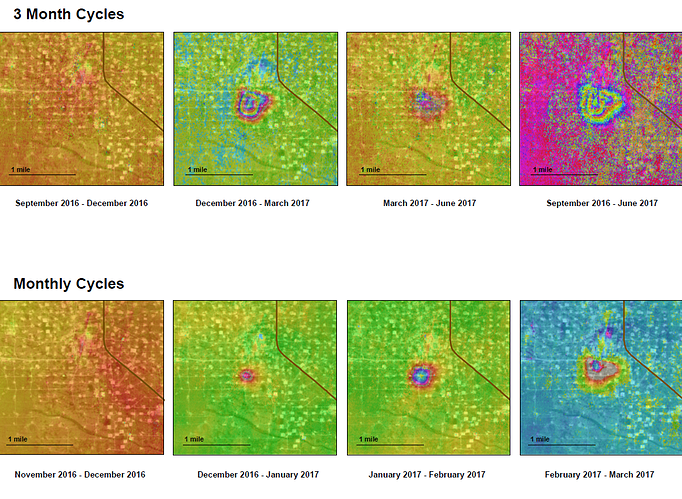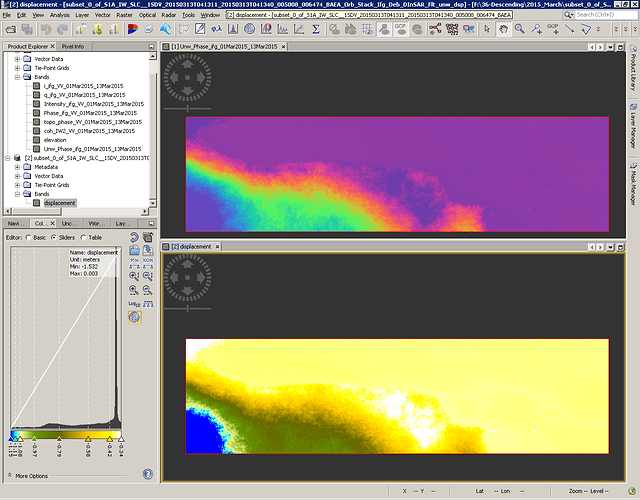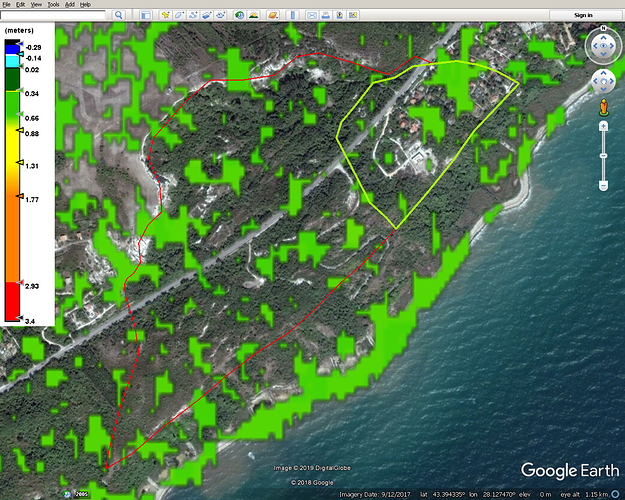nice job on the thesis paper @thho
Yes, I did not mention the possibility of using a different sensor. L-band will be much more coherent over longer time intervals than the C-band Sentinel-1 data. Depending on the area, there could be ALOS-1 SAR data available from ESA or the NASA Alaska Satellite Facility (ASF). Since I am a member of the NISAR Science Team, I will also mention that NISAR will be acquiring L-band SAR over all land every 12 days starting in 2022.
Yes there’s some other data available through ASF other than Sentinel. Franz is doing a great job up there making data more available. I use that site a lot and highly recommend it to anyone. ASF also has so many good resources to help new folks get started with InSAR processing and concepts.
2022?!? It was 2020, then 2021…
I try to follow what’s going on with NISAR since I attended the 2015 applications workshop, I’m super excited about it.
The NISAR launch date was expected in December 2021 since around 2016, due to availability of funds from NASA. They had to move it to January 2022 recently when we changed the satellite from right-looking (northward) to left-looking (southward).
First I’d like to thank all the colleagues spending some time to provide their insight on this topic.
I also appreciate the job guys are doing in ASF. I’ve found Vertex to be more friendly than SciHub (personal view). Also the baseline option is really nice and could save some time in downloading only the
images one need (task dependent).
With regard to L-band the reason I can not use it is that ALOS data I have are from ESA archive ALOS-1 mission. For the project I’m currently working on I need data from 2015 onward.
@dsmilo Could share your time series both short and long intervals
@tleyvap Actually there are several landslides almost overlapping . i have no data about the depth, but I guess is about 30m or so. Unfortunately there is a lot of vegetation - this is the reason to work with winter and autumn scenes. As far as I know all the areas I’d like to study are active.
sure. First Image: You can see the September 2016 to June 2017 interferogram showing nothing happening in the center of the image. But if you break up that 9 month period into 3 month intervals you start to see features. The ground may be moving faster than the sensor can capture, so I broke up the 3 month intervals into monthly intervals to see the difference. This is all using Sentinel data.
Second Image: I did a similar study but more to identify when a failure occured and model the behavior of the failure. This was also using Sentinel data.
I wish I could share more about the studies, but I can’t. I did a lot more with the data to develop profiles, contours, and deformation time series models, ect.
very nice example on the impact of the selection of suitable image pairs and temporal baselines.

@dsmilo Thank you for giving your expert view on the subject. I will try to take advantage of it.
Could you check the graph I’ve used, please. Is it OK?
Thanks 
I don’t think there is anything wrong with the process you are following, however, I would definitely use shorter time periods. It would also be good to subset your data to remove areas you don’t care about for this study. Have an extent that covers your area and allow a buffer area so you can have some context as to where areas are moving and aren’t moving. As you are analyzing, it would be good to get some survey data or some kind of geologic data showing that the area is behaving like a landslide. It’s good to have a few datasets telling the same story; data backing up data is always a good rule of thumb and a good gut check that you have reasonable data that makes sense.
@dsmilo Thank you for your suggestions. The data I download are from different frames this why I have process the whole IW 2. After that I make a subset. The area I investigate has several drawbacks - vegetation, steep slopes (almost vertical), being at the sea shore so high water vapor which is distorting the radar signal. With regard to the geological and geodetic data I could say that I have some information from colleagues and local media since the landslide areas activate periodically. I cannot be explicit since this is project I work on at this moment.
Here is the next UNSUCCESSFUL example of DInSAR processing:
As it can be seen the period is quite close - 12 days.
what exactly is telling you this is in fact an unsuccessful product? Have you applied terrain correction and looked at the result in a GIS? Do you have some expectation of where change should be detected given the time period you picked?
Right after you ran the coregistration (the first step), did you check the coherence statistics? Was that number closer to 100 or 0?
@dsmilo Thank you for being kind to send your comments.
I can not provide figures about coherence just after the coregistration since the processing is done by the graph. I can make an experiment, but I guess the estimated coherence by the InSAR stack overview can be considered.
I’m considering the result not-good-enough since I’ve obtained much better results after unwrapping.
What I can do by now is to try with DEM where the sea is set to NaN
coherence is created in the interferogram step and transferred to the subsequent products (unless explicitly excluded)
they are not really comparable, because the estimated coherence does not include decorrelation by different types of landcover in a spatial way. Would be interesting to see how the coherence of your study area looks, especially because you say that you retrieved better results with other image pairs (if I understood you correctly).
In your figure, I see a coherence band
It looks like the lower left quadrant of your scene is either water or very dense forest, with very low coherence, so the unwrapped phase is completely unreliable there. The rest of the scene looks reasonable.
I’d like to thank all that reply here -
@dsmilo it provided me other view of the picture since the processes are quite slow and no fringes can be seen
@ABraun - always ready to give a nice advice
@EJFielding - you are correct some of the data are from sea surface.
Below I will put an image after terrain correction step with values above 0.3 over-imposed GE raster
red and green lines are two of the landslides registered
An interesting study on spaceborne landslide monitoring and measurement was recently published:
It summarizes the potential and constraints of multi-temporal radar approaches and gives recommendations for best configurations.



